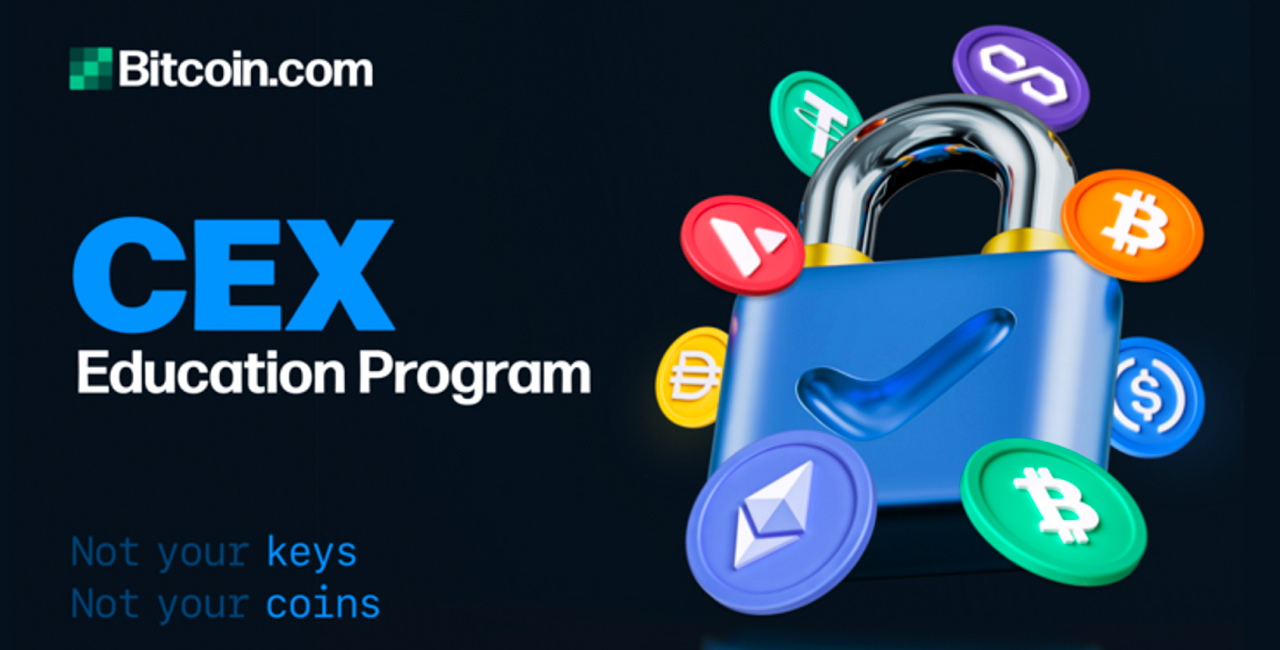We Must Expedite the Move From Centralized Services to Viable DeFi Alternatives

There is a reason centralized exchanges have dominated despite being antithetical to crypto’s core tenets.
The following opinion editorial was written by Bitcoin.com CEO Dennis Jarvis.
The gross mismanagement and outright fraud in 2022 by many opaque centralized exchanges are driving people back to the core tenets of crypto, such as decentralization, self-custody, transparency, and censorship resistance. People are naturally turning to DeFi (decentralized finance). Unfortunately, much of DeFi is not yet ready to act as a suitable substitute.
In this article, I will talk about two of the most important challenges: how to make DeFi more accessible to new users and how to improve its performance when compared to centralized services.
The Onboarding Problem and Its Solution
The problem with getting new users to adopt DeFi is partly due to user experience (UX). Bitcoin.com’s Head of Product Experience Alex Knight did an excellent job outlining the problems and solutions of the UX challenges in web3 applications. To summarize: the self-custodial web3 model generally leads to developers creating a user experience that’s fundamentally different from the one people are used to in the custodial web2 model — and that creates huge friction.
Solving the UX problem is a combination of clever design, education, and incentives.
On the design front, the challenge is to create products that are as familiar and easy-to-use as the best web2 analogs. At Bitcoin.com our self-custodial multichain wallet app has long-provided an intuitive experience, but only for simple actions like buying, selling, sending, and receiving crypto. As we integrate more complex DeFi features, including our own decentralized exchange Verse DEX, right into the app, it is critical that the user experience remain as indistinguishable from web2 as possible while using web3 rails exclusively.
Yet even if web3 manages to reach parity with web2 in terms of ease-of-use, there is still the challenge of convincing people to make the switch. This is where education and incentives come in. Education will do two things: rebuild confidence in crypto, and prepare users to make the move. Incentives will provide the push that’s often needed to try something new.
Luckily, the cryptocurrency space is ideally suited to provide the perfect combination of education and incentives. I’ve written about the power of loyalty tokens in crypto, and the importance of getting them right, and we’ve thought long and hard about how to integrate them in the Bitcoin.com ecosystem.
Now that we’ve launched our own ecosystem token VERSE, we’re able to start experimenting with ways to use monetary incentives to safely guide people into decentralized finance, where they can benefit from its advantages over CeFi (centralized finance). One way we’re planning on doing that is to reward newcomers with VERSE tokens for taking actions like securely backing up their wallet.

This is supported by our newly launched CEX Education Program that will reward people affected by centralized crypto company insolvencies while encouraging the adoption of decentralized finance and self-custody.
The Execution Problem
Even if you solve the problem of onboarding new users, DeFi in its current iteration fails in responsiveness and market size. If either of these is lacking, people will not come, or abandon soon after.
DeFi responsiveness has seized up under what would be considered light traffic in web2. On-chain capacity has not been able to handle peak 2021 DeFi usage. Even with the proliferation of alt-L1’s and the beginnings of live L2’s, on-chain block space was easily swamped.
DEX market size encapsulates DeFi’s capacity problem. I’ll let crypto Twitter help me out here:
Note that these comments were posted just before FTX imploded. It’s possible that the tweets’ authors’ views have changed since then. Still, their criticisms ring true: Current DeFi products simply cannot replace CEXs in terms of liquidity, volume, and order matching.
It’s a problem for the crypto industry when many of the biggest traders, market makers, and proponents of crypto cannot execute trades or participate in size on decentralized platforms. They’re forced to gather on risky centralized exchanges, which creates a self-reinforcing cycle of dependence on CEXs.
In the past, CEXs seemed like an agreed upon stop-gap until crypto technology was at a place where it was capable to take over. As crypto garnered more attention, I feel like the industry as a whole became complacent, distracted by the amount of money pouring in. The feeling was something like, “Those things will be solved in time.”
Solution to the Execution Problem
I believe that the base crypto technological tools are all here, or nearly so. An example of a DEX that can compete on an acceptable level with a CEX, is the layer 2-based dYdX exchange. Leveraging zero-knowledge proof systems, dYdX can execute transactions cheaply and quickly enough to compare with the responsiveness of CEXs. Currently, “the existing dYdX product processes about 10 trades per second and 1,000 order places/cancellations per second, with the goal to scale up orders of magnitude higher.”
Now the only thing it lacks is comparable liquidity. Since good liquidity begets better liquidity, a constructive first step is that dYdX uses an order book and matching engine, a much more efficient and profitable way to make markets. Using an order book should attract market makers to provide the liquidity sufficient to make DEXs comparable to CEXs.
Additionally, liquidity will come now that it’s obvious (again!) that you can’t trust these centralized intermediaries. Big players in crypto need to make a concerted effort to move out of CEXs into DeFi protocols. Bitcoin.com, for one, is proud to be offering extensive DeFi solutions. The Bitcoin.com Wallet, with over 35 million self-custodial wallets created to date, continues to be an important onboarding tool, setting up newcomers to easily and securely interact with decentralized finance.
The Future Is DeFi
Don’t be disillusioned by the shortcomings I have identified here. The truth of the matter is that all of DeFi’s shortcomings are trivial in comparison to its strengths. DeFi enables self-custody of your assets but with the utility we’ve come to rely on from centralized financial institutions; for example, swapping between assets, earning yield on your assets, or using your assets to take out loans. Until now, these financial activities have always required trusted intermediaries. The solutions to DeFi’s problems are attainable, which is in stark contrast to the entrenched problems in traditional finance. Ultimately the answer to traditional finance’s problems is DeFi.
What are your thoughts on the potential for decentralized finance to replace centralized finance? Share your thoughts in the comments section below.





